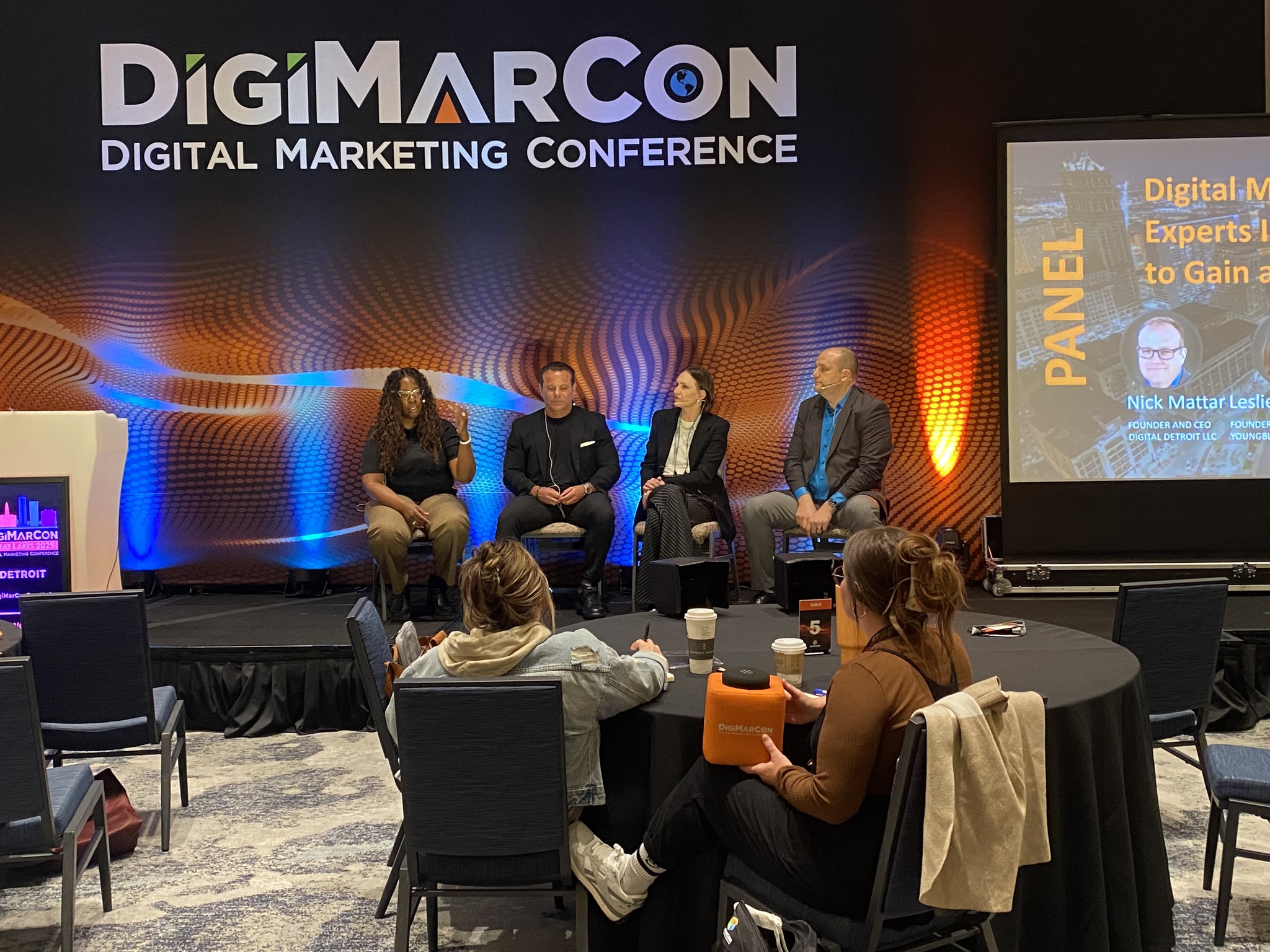Day 1 at DigiMarcon Great Lakes: Why Google Still Dominates Search (Despite the AI Hype)
The first day of DigiMarcon Great Lakes kicked off with a powerhouse session from Tom Shapiro, CEO of Stratabeat, who delivered a compelling, data-backed presentation on B2B SEO in 2025. In an era where marketers are obsessing over AI answer engines like ChatGPT, Shapiro’s research cuts through the noise with hard-hitting SEO statistics—proving that Google search is still where the real audience is.
His message was clear: The death of organic search has been greatly exaggerated.
The Big Myth: “AI Answer Engines Are Killing Google Traffic”
One of the most striking takeaways from Shapiro’s talk was his debunking of the pervasive myth that AI Overviews (AIOs) are destroying organic search traffic.
- Google processes 13.7 billion searches per day—a 22% increase from last year.
- ChatGPT and other AI tools drive just 1-3% of traffic compared to Google’s dominance (50-70% for most B2B sites).
- Only 17.1% of B2B queries even trigger an AI Overview—meaning 82.9% of first-page rankings still don’t include one.
“Marketers are overestimating the threat of AI search,” Shapiro said. “The data shows that SEO is far from dead—it’s just evolving.”
The Top 10% of SEO Performers Are Leaning Into These Strategies
Shapiro’s research analyzed 300 B2B websites and 15,000+ data points, revealing what separates the top 10% of high-growth companies from the rest. Here’s what they’re doing differently:
1. Blogging SEO Statistics: Frequency Matters More Than Ever
- Companies publishing 9+ blog posts per month saw 20.1% higher organic traffic growth than those posting less.
- The top 10% averaged 11 posts per month—and their blogs generated 58.4% more traffic than competitors.
- Blogging frequency also boosted referring domains by 89.9%, proving that consistent content builds authority.
Takeaway: If you’re not blogging at least weekly, you’re leaving traffic on the table.
2. Original Research: The Secret Weapon for Links & Rankings
- Websites publishing original research had:
- 20.9% more top 10 rankings (vs. a 10.2% decline for those without research).
- 67% higher organic traffic growth.
- 80% more referring domains (3.4X higher than sites without research).
“Google rewards unique, data-driven content,” Shapiro noted. “If you want to stand out, invest in original studies.”
3. Audience Segmentation: The Underrated Traffic Multiplier
- Companies that segmented content by industry saw:
- 17.3% higher organic traffic growth (vs. 11.5% for non-segmented sites).
- 50.4% more traffic growth than competitors.
- 46.5% more referring domains (57.7% if combined with link-building).
“Long-tail, industry-specific keywords are easier to rank for and drive higher conversions,” Shapiro explained.
4. Free Online Tools: The Untapped SEO Goldmine
- B2B sites offering free tools (ROI calculators, interactive wizards, etc.) saw:
- 24.7% more top 10 rankings (vs. just 2% for sites without tools).
- 80% higher organic traffic growth.
- 88% more referring domains (3.5X higher than those without tools).
“Tools create linkable assets,” said Shapiro. “They’re magnets for backlinks and rankings.”
The AIO Reality: Adaptation Beats Fear
While AI Overviews are growing (appearing in 19.2% of queries for top performers), Shapiro’s data proves they’re not a traffic killer—just a new variable to optimize for.
- The top 10% of sites faced 12.3% more AIO competition yet still grew traffic 9.2X faster than the rest.
- One B2B company grew traffic 346.9% year-over-year despite AIOs appearing for 25.7% of their keywords.
“Instead of fearing AI Overviews, reverse-engineer them,” Shapiro advised. “See which queries trigger them and adapt your content strategy accordingly.”
Final Takeaways: What Works in 2025
- Blog aggressively (9-11 posts/month).
- Invest in original research—it’s Google’s favorite content.
- Segment by audience for long-tail keyword domination.
- Build free tools to boost rankings and backlinks.
- Don’t panic about AI Overviews—optimize for them.
Shapiro closed with a powerful reminder: “SEO isn’t dying. It’s just getting smarter. The companies winning in 2025 are the ones using data—not hype—to guide their strategies.”
Why This Matters for Local SEO Statistics
While Shapiro’s talk focused on B2B, the lessons apply to local SEO as well:
- Blogging frequency improves local rankings (Google favors fresh content).
- Original data (like local market reports) earns backlinks and visibility.
- Audience segmentation (location-based content) captures hyper-relevant traffic.
The bottom line? Whether you’re in B2B or local SEO, the fundamentals still win.
Want more data-driven insights? Follow Tom Shapiro on LinkedIn and check out Stratabeat’s research.


